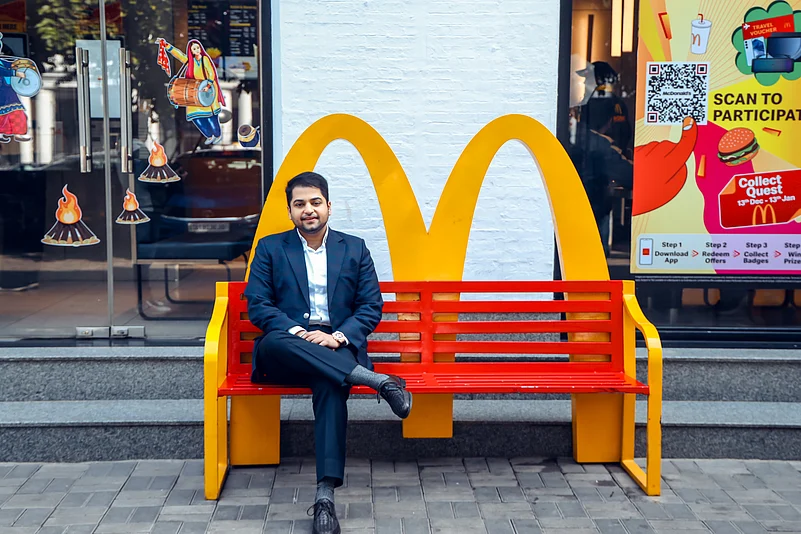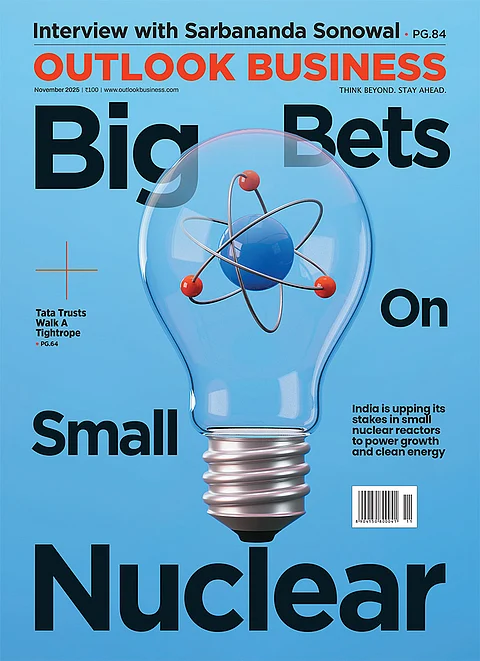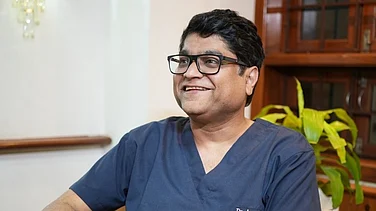Connaught Plaza Restaurants Limited (CPRL), the operator of McDonald's India, plans to invest between $100 million and $125 million over the next three to four years to expand its outlets in northern and eastern India. In an exclusive interview with Outlook Business, CPRL promoter and Vice Chairperson Anant Agarwal said they aim to have 300 outlets by the end of 2025.
CPRL currently operates 245 stores in northern India, including Uttar Pradesh, Haryana, Punjab, Delhi NCR, Rajasthan, and the northeastern states. Agarwal believes the region remains underpenetrated and that they can double their outlets in the coming years. The MMG Group, led by Sanjeev Agarwal, took over McDonald's India's holding company in 2020 with 160 stores after its original partner, Vikram Bakshi, exited the venture. Now, Vice Chairperson Anant Agarwal discusses CPRL's expansion plans and why they are optimistic about India's growing coffee consumption.
CRPL now operates 245 McDonald's stores, and about 120 of them have McCafé. What is your expansion plan for this year?
Currently, we have 245 stores, and we just opened our latest store in Siliguri, which has been garnering a great response in the region. Out of the 245 stores, we have McCafe in 125. We plan to double our outlet base in the next three to four years. We also plan to double the number of McCafes in the next 12 to 18 months. By year-end, we will have 200 McCafes for sure. By the end of this year, we should have close to 300 outlets, with McCafe in more than 200 of them.
You’re focusing a lot on McCafé. Is there a particular reason for that? How were last year’s sales? Do you see any new trends in the market?
The coffee culture has been expanding in India. Young working class and students are not necessarily shifting but are increasingly adopting coffee consumption. Coffee has become a common commodity, and many new specialty coffee chains have been emerging. With growing coffee consumption, our goal is to provide the best quality coffee at a consistent standard and the best possible price—that is what McCafe stands for. We have been very focused on expansion, and our aim is for almost all our outlets should have a McCafe.
McCafé sells coffee at a much lower cost compared to some premium brands. Given that many people see coffee as an experience to be enjoyed in a relaxed environment, will CRPL focus on that aspect?
No, no, no, no, absolutely not. Our coffee is very premium. We are sourcing our coffee from Chikkamagaluru, Karnataka. The recipe for good coffee is freshness. You need a fresh roast to get a good crema. That is why we source it from India. Our coffee is 100% Arabica, which is the premium side of coffee. And I think there are three steps to achieving good coffee. It's 25% high-quality coffee beans that have been properly sorted—we get a fresh roast from Chikkamagaluru. 25% is the equipment—we use world-class equipment, all Rancilio, in which we have made a good investment. And 50% is barista training—we spend a lot of hours on it. Every McCafe has three beanies and one barista, making it a four-man team, and 600 hours are spent on training. I don't know how many chains do this, but we really focus on consistency and quality.
But how are you able to sell it at such a low cost?
Yes, the idea is that, as a brand, McDonald’s stands for value, consistency, and quality. Value is a big game for us. And if you see most specialty chains, they're offering cappuccinos or americanos starting at Rs 272–Rs 250. That can become a little inaccessible for a lot of people. For students, they cannot afford a Rs 250 coffee on a daily basis, but Rs 99 for sure. So our idea, again, is to truly democratise it and make it accessible to everyone so that people get used to the idea of having coffee on a daily basis. We will further strengthen this through our loyalty programs and digital programs, which will drive coffee consumption. And our idea is that the larger the audience we capture, the bigger and more loyal our base will be.
How much do you plan to invest in this expansion, and when do you expect a return on investment?
McCafé, as a channel, has been growing at a faster pace. Our ROI for McCafé should materialise within three to four years. In terms of investment, we plan to invest between $100 million and $125 million over the next three to four years. This will go into outlet expansion, digital capabilities, and McCafé’s overall growth.
How do you plan to finance these investments? Any plans to list CRPL?
We have no immediate plans to list. It’s something for the future, but as of now, most of the investment will come from internal cash flows.
Can you share some details on last year’s sales? Which segment performed best?
We get sales through three channels: delivery, dine-in, and drive-through. Dine-in is very strong, as it actually creates the brand by providing a complete brand experience. When people dine in our stores, that is when they get the true McDonald's experience. But delivery is also very big for us, accounting for close to 30–35% of sales.
Many companies are exploring setting up new units to cater to quick commerce. Is McDonald's planning something similar in its supply chain?
Quick Commerce has been growing rapidly, as you've seen in metro cities. So, yes, we are part of both Swiggy's Bolt and Zomato's Bistro programs. And I think it's not quick commerce; it's rapid delivery. Quick commerce is mostly for groceries or packaged consumables—like Zepto Cafe and similar services. But for us, the supply chain is pretty much the same. We have a centralised supply chain where items from our suppliers go to a common DC, and from there, trucks carry them to stores on a weekly basis, depending on the consumption cycle. We work with the same set of vendors and suppliers to ensure consistency and quality. We also conduct regular audits to maintain top standards.
And how has that segment been performing in terms of numbers?
I think it's too early to comment on financials since this was launched just a couple of months ago. But what Swiggy told us is that Bolt, or this rapid delivery model, could account for 25% of total food delivery by mid- or end of this year. That’s significant. If 25% of food orders come through these faster delivery channels, like the 15-minute delivery network, that’s a huge volume. We cannot miss out on that, so we definitely want to be part of it.
Inflation, especially food inflation, has been a concern for many companies. How has McDonald's dealt with it?
We have felt the pain of inflation. It has been very prominent, with commodity prices rising. However, we are working to curb this through supply chain and operational efficiencies to avoid taking a massive price hike. Value remains a significant part of our strategy. While the market is shifting towards premium offerings, we believe in a balanced approach. We aim to maintain affordability without compromising on value. Through better marketing, bundling, and supply chain efficiencies, we continue to offer value-driven options to our consumers. Those who start with our entry-level offerings today—priced at Rs 40, 49, 50, or 99—will become future consumers of our premium products.


























